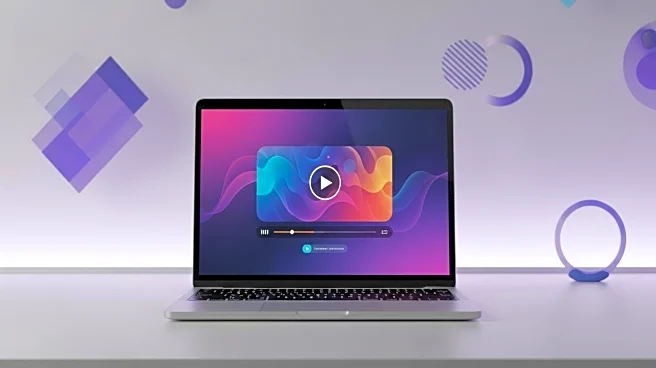What's Happening?
Shopify has released an analysis of the best video formats for web use, emphasizing the importance of choosing the right format to optimize user experience and site performance. The report highlights several popular video formats, including MP4, WebM, MOV, MKV, AV1, and WMV, each with distinct advantages and disadvantages. MP4 is identified as the most versatile format, offering high-quality video that plays smoothly across most browsers and devices. WebM is noted for its fast load times and small file sizes, although it may not be compatible with older browsers. MOV files provide high-quality video but are large and primarily compatible with Apple devices. MKV supports multilingual content but lacks browser compatibility. AV1 offers efficient compression but is less reliable on Apple devices. WMV is outdated, with limited compatibility on modern platforms.
Why It's Important?
The choice of video format can significantly impact website performance, user engagement, and search engine optimization. Faster load times and better video quality can enhance user experience, reduce bounce rates, and increase customer engagement. Businesses must consider their target audience's device preferences and browser compatibility when selecting video formats. MP4's widespread compatibility makes it a preferred choice for most businesses, ensuring smooth playback and minimal hassle. Understanding the strengths and limitations of each format allows businesses to tailor their video content to meet specific needs, whether for product highlights, background videos, or downloadable content.
What's Next?
Businesses are likely to continue prioritizing MP4 for its balance of quality and compatibility, while exploring newer formats like AV1 for specific use cases. As technology evolves, video formats may adapt to offer better compression and compatibility across devices. Companies may invest in tools and strategies to optimize video content for mobile users and improve site performance. The ongoing development of video formats will require businesses to stay informed about emerging technologies and adjust their digital strategies accordingly.
Beyond the Headlines
The choice of video format also has implications for accessibility and inclusivity. Formats that support subtitles and multilingual content can help businesses reach a broader audience and comply with accessibility standards. Additionally, the environmental impact of video streaming, related to data usage and energy consumption, may drive demand for more efficient formats. Businesses may consider these factors when selecting video formats to align with sustainability goals and enhance their brand reputation.











